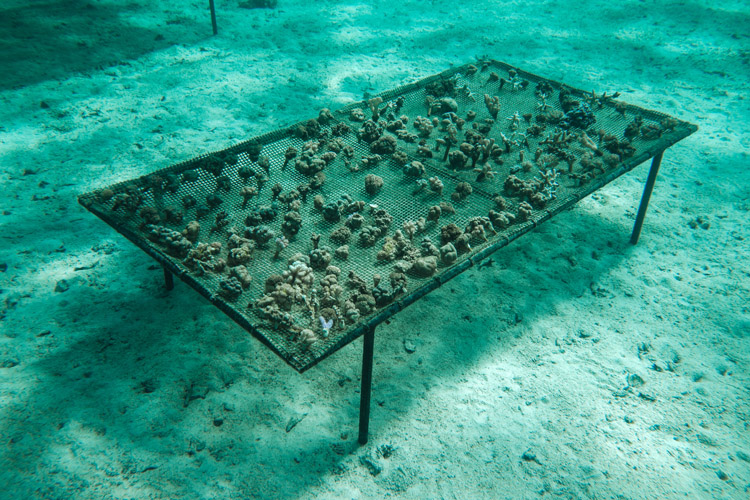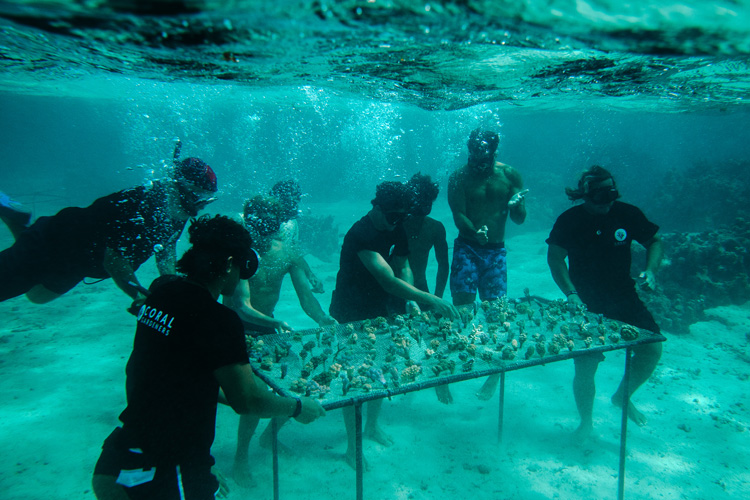Pro surfers teamed up with the Coral Gardeners to plant dozens of units of coral at their restoration center in Moorea, French Polynesia.
Michel Bourez, Lea Brassy, Matahi Drollet, and Koa Smith planted baby coral into an underwater frame where they will mature for 20-24 months before being transplanted onto degraded areas of the reef.
When these coral fragments grow, they help to recreate reef habitats, which allows other life to return and strengthens the reef against future damage.
"It's so cool to work with WSL Pure, Glowing Glowing Gone and the Coral Gardeners on the planting endeavor here at home in Tahiti," Bourez said.
The experience included the coral planting, along with an educational discussion around the importance of coral health to ocean health and solutions for improving the ecosystem.
"The solutions to make positive change can be very simple sometimes, and they make a major impact."

Saving What Is Left
Glowing Glowing Gone is a global campaign that advocates for greater action and funding for coral reef conservation.
The organization highlights the global danger signaled by fluorescing corals, the final stage of these marine invertebrates.
Coral Gardeners is a youth-led non-profit organization that is actively restoring coral reefs in French Polynesia.
Coral reefs are extremely vulnerable to climatic changes, ocean warming, and ocean acidification.
In the past three decades, overfishing, pollution, and uncontrolled coastal development have contributed to the death of 50 percent of the world's live coral.
When corals die, the surrounding ecosystem collapses.
According to scientists, we can now only save between 10 and 30 percent of the world's remaining coral reefs due to heat already in the system.
